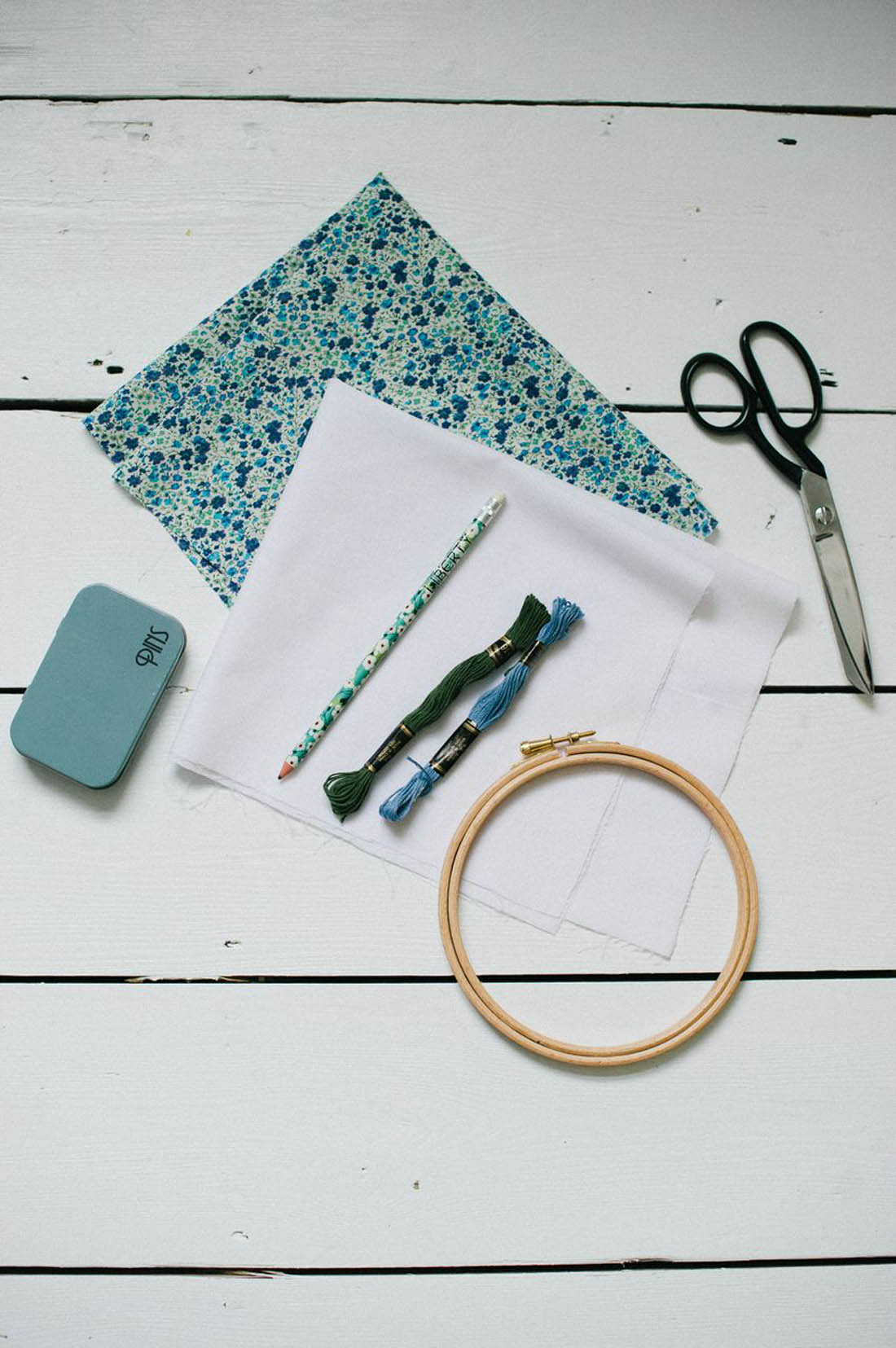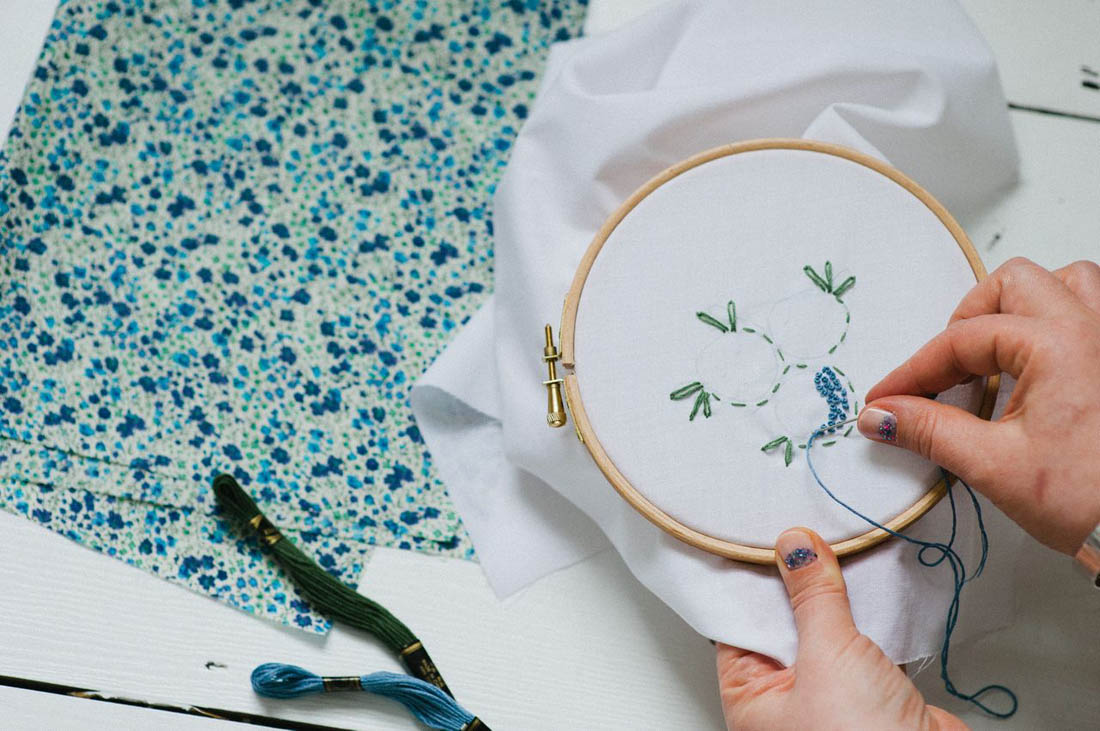I’m off to Germany this morning for the Designers’ Open and I was thinking about what I could take on the plane to keep me occupied. Embroidery came to mind and I remembered a tutorial that I made and Katharine Peachey shot for me ages and ages ago. The tutorial was originally shared over at 91 Magazine but I thought it would be nice to share it here, too, as it is one of my favourites. All you need is an old sheet to make these sweet embroidered napkins so it may be a good weekend project for you, especially now it is colder and the evenings are darker – all the more time for embroidery!
This was my first ever embroidery project so I practised by using a design by Jenny Hart for the Kin Community and I changed the colours to the faded blues of my beloved Hydrangeas. I used their video tutorials to learn how to do French Knots and I found them so helpful whilst learning basic stitches. Once I had gained a bit of confidence and got inspired I designed the other napkin motifs myself.

You will need:
A set of four plain napkins OR 40cm x 40cm pieces of white cotton fabric for each napkin (or even an old cotton bed sheet)
Four pieces of Tana Lawn Liberty print of an equal size to your napkins/white cotton
Embroidery hoop, needle and floss in a variety of colours
Sewing machine and thread
Fabric scissors and pins
Pencil
Step by step:
1. If you are recycling old napkins, then press well and use fabric scissors to cut four matching pieces of Liberty print fabric – these will form the back of each napkin. If you are using white cotton, cut pieces of this and your Liberty fabric to approx. 40cm x 40cm.
2. Get creative! Find inspiration from your favourite flower or floral fabric to help design a floral motif for each napkin. Draw your embroidery design with pencil onto the left hand corner of each piece of white cotton, or wherever you would like to sew it. You can do a different design on each napkin or the same in different colours.
3. Decide which embroidery stitch best suits the petals and leaves of each flower. If you are unsure about embroidery stitches, try watching video tutorials online. It’s much easier than it looks, I promise! I used ‘French Knots’ for the petals of this design and a ‘Lazy Daisy’ stitch for the leaves. I took inspiration from one of my favourite flowers, the Hydrangea, so used a variety of faded blues.
4. Once you have completed your design, pin the white cotton fabric and Liberty fabric right sides together.

Step 4
5. Sew the two pieces of fabric together leaving a 5cm gap open on one side so you can turn it inside out. Turn inside out and press the napkin well. Finally, using a contrasting thread, top stitch around all four sides of the napkin, ensuring to sew up the 5cm gap.

Step 5
Aren’t they pretty? Definitely one of my most treasured makes because of the time that went into that embroidery.

Have you got any sewing projects planned? Happy weekend!
Katy x
*All images by Katharine Peachey.


























































